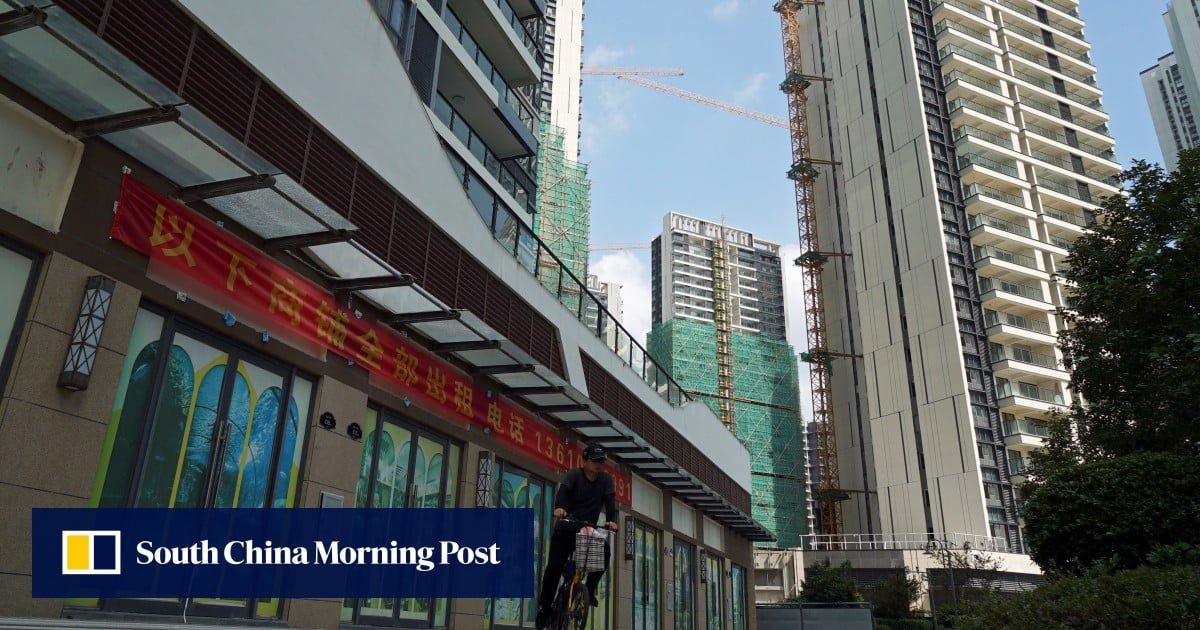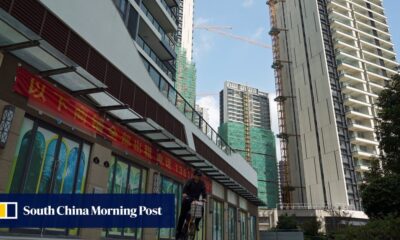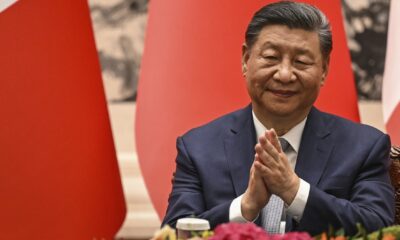China
Time Runs Out for Watch-Wearing Brother
China’s online community won’t have Watch-Wearing Brother to kick around anymore.

China’s online community won’t have Watch-Wearing Brother to kick around anymore.
The restructuring of the economy and resulting efficiency gains have contributed to a more than tenfold increase in GDP since 1978.
In 2006, China announced that by 2010 it would decrease energy intensity 20% from 2005 levels.
China has emphasized raising personal income and consumption and introducing new management systems to help increase productivity.
Nevertheless, key bottlenecks continue to constrain growth.
The two most important sectors of the economy have traditionally been agriculture and industry, which together employ more than 70 percent of the labor force and produce more than 60 percent of GDP.
China has acquired some highly sophisticated production facilities through trade and also has built a number of advanced engineering plants capable of manufacturing an increasing range of sophisticated equipment, including nuclear weapons and satellites, but most of its industrial output still comes from relatively ill-equipped factories.
The market-oriented reforms China has implemented over the past two decades have unleashed individual initiative and entrepreneurship, whilst retaining state domination of the economy.
On top of this, foreign direct investment (FDI) this year was set to “surpass $100 billion”, compared to $90 billion last year, ministry officials predicted.
In this period the average annual growth rate stood at more than 50 percent.
China is aiming to be the world’s largest new energy vehicle market by 2020 with 5 million cars.
In large part as a result of economic liberalization policies, the GDP quadrupled between 1978 and 1998, and foreign investment soared during the 1990s.
Agriculture is by far the leading occupation, involving over 50% of the population, although extensive rough, high terrain and large arid areas – especially in the west and north – limit cultivation to only about 10% of the land surface.
Except for the oasis farming in Xinjiang and Qinghai, some irrigated areas in Inner Mongolia and Gansu, and sheltered valleys in Tibet, agricultural production is restricted to the east.
Due to improved technology, the fishing industry has grown considerably since the late 1970s.
Offshore exploration has become important to meeting domestic needs; massive deposits off the coasts are believed to exceed all the world’s known oil reserves.
China is among the world’s four top producers of antimony, magnesium, tin, tungsten, and zinc, and ranks second (after the United States) in the production of salt, sixth in gold, and eighth in lead ore.
China also has extensive hydroelectric energy potential, notably in Yunnan, W Sichuan, and E Tibet, although hydroelectric power accounts for only 5% of the country’s total energy production.
Great inland cities include Beijing and the river ports of Nanjing, Chongqing, and Wuhan.
Business
China’s Golden Rooster Film Festival Kicks Off in Xiamen – Thailand Business News

The 2024 China Golden Rooster and Hundred Flowers Film Festival began in Xiamen on Nov 13, featuring awards, cultural projects worth 31.63 billion yuan, and fostering international film collaborations.
2024 China Golden Rooster and Hundred Flowers Film Festival Opens
The 2024 China Golden Rooster and Hundred Flowers Film Festival commenced in Xiamen, Fujian province, on November 13. This prestigious event showcases the top film awards in China and spans four days, concluding with the China Golden Rooster Awards ceremony on November 16.
The festival features various film exhibitions, including the Golden Rooster Mainland Film Section and the Golden Rooster International Film Section. These showcases aim to highlight the achievements of Chinese-language films and foster global cultural exchanges within the film industry.
On the festival’s opening day, a significant milestone was reached with the signing of 175 cultural and film projects, valued at 31.63 billion yuan ($4.36 billion). Additionally, the International Film and Television Copyright Service Platform was launched, furthering the globalization of Chinese film and television properties.
Source : China’s Golden Rooster film festival opens in Xiamen – Thailand Business News
China
Italy and China New DTA Set to Take Effect in 2025: Important Changes and Implications

Italy ratified an upgraded Double Tax Agreement (DTA) with China, effective in 2025, to reduce tax burdens, prevent evasion, and enhance investment. The DTA introduces modern provisions aligned with international standards, targeting tax avoidance and improving dispute resolution for Italian businesses.
Italy recently ratified the upgraded Double Tax Agreement (DTA), which will finally take effect in 2025. This agreement was signed in 2019 and was designed to reduce tax burdens, prevent tax evasion, and promote Italian investment in China.
On November 5, 2024, Italy’s Chamber of Deputies gave final approval to the ratification of the 2019 Double Tax Agreement (DTA) between Italy and China (hereinafter, referred to as the “new DTA”).
Set to take effect in 2025, the new DTA is aimed at eliminating double taxation on income, preventing tax evasion, and creating a more favorable environment for Italian businesses operating in China.
The ratification bill for the new DTA consists of four articles, with Article 3 detailing the financial provisions. Starting in 2025, the implementation costs of the agreement are estimated at €10.86 million (US$11.49 million) annually. These costs will be covered by a reduction in the special current expenditure fund allocated in the Italian Ministry of Economy’s 2024 budget, partially drawing from the reserve for the Italian Ministry of Foreign Affairs.
During the parliamentary debate, Deputy Foreign Minister Edmondo Cirielli emphasized the new DTA’s strategic importance, noting that the agreement redefines Italy’s economic and financial framework with China. Cirielli highlighted that the DTA not only strengthens relations with the Chinese government but also supports Italian businesses, which face increasing competition as other European countries have already established double taxation agreements with China. This ratification, therefore, is part of a broader series of diplomatic and economic engagements, leading up to a forthcoming visit by the President of the Italian Republic to China, underscoring Italy’s commitment to fostering bilateral relations and supporting its businesses in China’s complex market landscape.
The newly signed DTA between Italy and China, introduces several modernized provisions aligned with international tax frameworks. Replacing the 1986 DTA, the agreement adopts measures from the OECD/G20 Base Erosion and Profit Shifting (BEPS) Project and the OECD Multilateral Instrument (MLI), targeting tax avoidance and improving dispute resolution.
The Principal Purpose Test (PPT) clause, inspired by BEPS, is one of the central updates in the new DTA, working to prevent treaty abuse. This clause allows tax benefits to be denied if one of the primary purposes of a transaction or arrangement was to gain a tax advantage, a move to counter tax evasion through treaty-shopping.
| This article was first published by China Briefing , which is produced by Dezan Shira & Associates. The firm assists foreign investors throughout Asia from offices across the world, including in in China, Hong Kong, Vietnam, Singapore, and India . Readers may write to info@dezshira.com for more support. |
Read the rest of the original article.
Business
China’s New Home Prices Stabilize After 17-Month Decline Following Support Measures

China’s new home prices fell for the 17th month in October, declining 0.5% from September, but slowing, indicating potential market stabilization amid supportive measures. Second-hand home prices showed mixed trends.
Decline in China’s Home Prices Stabilizes
China’s new home prices continued to decline in October for the 17th consecutive month, although the drop showed signs of slowing. Recent support measures from Beijing appear to be inching the market toward stabilization, as evidenced by a lighter decline compared to earlier months.
Monthly and Yearly Comparisons
According to the latest data from the National Bureau of Statistics, new home prices across 70 mainland cities fell by 0.5% from September, marking the smallest decrease in seven months. Year-on-year, prices dropped by 6.2%, slightly worse than the September decline of 6.1%. In tier-1 cities like Beijing and Shanghai, prices decreased by 0.2%, a smaller fall than 0.5% in the previous month.
Second-Hand Home Market Trends
Second-hand home prices in tier-1 cities experienced a 0.4% increase in October, reversing a 13-month downward trend. Conversely, tier-2 cities observed a 0.4% drop in second-hand prices, while tier-3 cities faced a similar 0.5% decline. Overall, recent trends indicate a potential stabilization in China’s property market.
Source : China’s new home prices slow 17-month decline after support measures kick in












